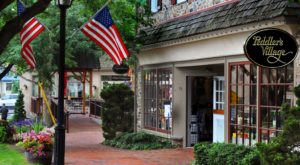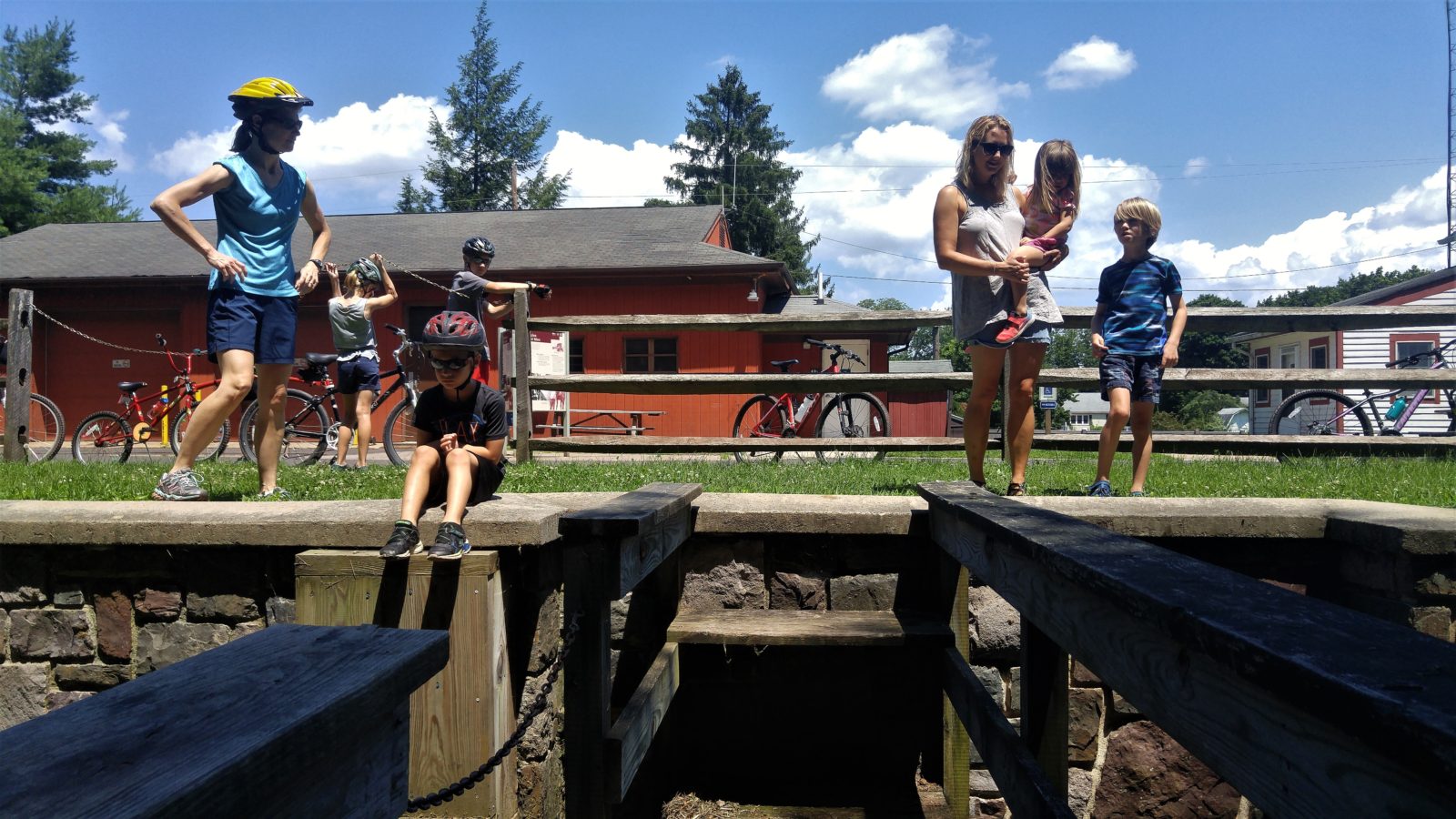Kugler, Fleece, Frogs, Flush and Lodi
– bits of Bucks County’s illustrious history.
A part of the charm and intrigue of Bucks County are its place names. Take Kugler’s Roost in Milford Township. Who was Kugler? And why was he roosting? All that we’ve been able to determine is he was a local hermit in the Upper Bucks village of Trumbauersville. Rock Hill looms a mile to the south and on that stony mass is a ledge. This came to be known as Kugler’s Roost. He either liked to spy on lowlanders from up there in Colonial times, or enjoyed sunning himself before beach season. Who knows?
There are many other curiosities that my family and I have investigated. One of them is Frog Hollow in the Little Neshaminy Valley of southwestern Warrington in Central Bucks. The hamlet where Route 611 crosses Little Neshaminy Creek was known for two things back in the 19th Century: the famous Frog Hollow Hotel, and a power house to juice the trolley line that once ran between Willow Grove and Doylestown.
According to dusty archives, the Paul Family owned much of the hollow and suggested a new name: Paul Valley. It never stuck. Residents preferred the croaking toad. Still, how did the original name come about? One old timer explained. “Man alive,” he told a visitor in 1938. “Dem frawgs, dey sho’ do hollah nites.”
Moving down county to Bensalem, a section of Neshaminy Creek near its junction with the Delaware River is called Flushing. You might think that has to do with the ebb and flow of estuary tides. Not. Doylestown attorney Hugh B. Eastburn said his forebears, the Rodmans, gave it its name. The family had emigrated from Flushing, England to Flushing, Holland. From there, they moved to Flushing, Barbados, then to Flushing, Rhode Island. Arriving in Bensalem the Rodmans decided it was only appropriate to call their little slice of heaven Flushing.
Back in Central Bucks, the hamlet of Fleecydale always has intrigued us. A road sign points the way off River Road above New Hope. What’s so fleecy about the dale, we wondered. Turns out the name comes from “Fleecy Dale Mills” built in 1811 on the Paunaucussing Creek in northwestern Solebury. The mill near Carversville produced profits by cleaning – fleecing – clover seeds for farmers. So, all roads led to Fleecydale if you needed your seeds cleaned.

In nearby Buckingham, Lahaska is a crossroads better known as Peddler’s Village. Two hundred years ago, residents called it Hentown. The main attractions were a an axe factory, a hotel, a general store and beautiful maidens. We presume residents desired a name change. The last of the Lenapi Indians suggested “Lahaska” after the wigwam village that once existed there. Bingo! But how to spell the new name? There was no consensus around the pickle barrel at the general store. Was it Lahaskeek? Or maybe Lahasaka? Lasskeek? Layoskeek? Laoskeykee? Lavoskee? (Just kidding on the latter.) Anyway, the feds ended the dispute; the post office would be known as “Lahaska”. Case closed.
For 19th century poets, “Lahasaka” lived on. John P. Rogers, for instance, picked up this anonymous lyric about the town’s beautiful women for his book on Plumstead’s Doan Gang:
“The forests are noble,
The meadows are green
And lovely – thrice lovely
Does Lahasaka seem;
But thy lasses are fairer
Than flower or tree,
The delight of us rustics
And an honor to thee.”
Another place name harkens back to my youth. I grew up near sweltering Lodi in the central valley of California. I never got stuck there like singer/songwriter John Fogerty of Credence Clearwater Revival. Getting stuck in Bucks County’s Lodi isn’t half bad. It’s an extraordinarily bucolic setting just off River Road in Tinicum Township. The name defines a lock on the Delaware Canal of the 19th century. Lodi was where large mechanical gears raised and lowered wooden gates to adjust the flow of canal water. As I explained to my grandkids Dashiell, 7 and Margaux, 3, this allowed narrow boats filled with coal to pass, headed for Bristol. By muscling a make-believe crank handle, Dash and dad Michael mimicked the process of raising and lowering one of the big Lodi gates.
Tune-smith Fogerty had no role in giving the old lock its name. It came from Italian immigrant laborers who built the canal and settled nearby in the 1830s. They got homesick viewing the topography – thick forests shrouding a percolating creek flowing down to the Delaware River from palisade cliffs. The scene reminded them of their native Lodi, a city in the province of Milan, Italy, where Napoleon in 1796 drove out Austrians, making him president of the Italian Republic.
Poem anyone?
Sources include my Rosetta Stone of local history, “Place Names of Bucks County Pennsylvania” by George MacReynolds published in 1942.

